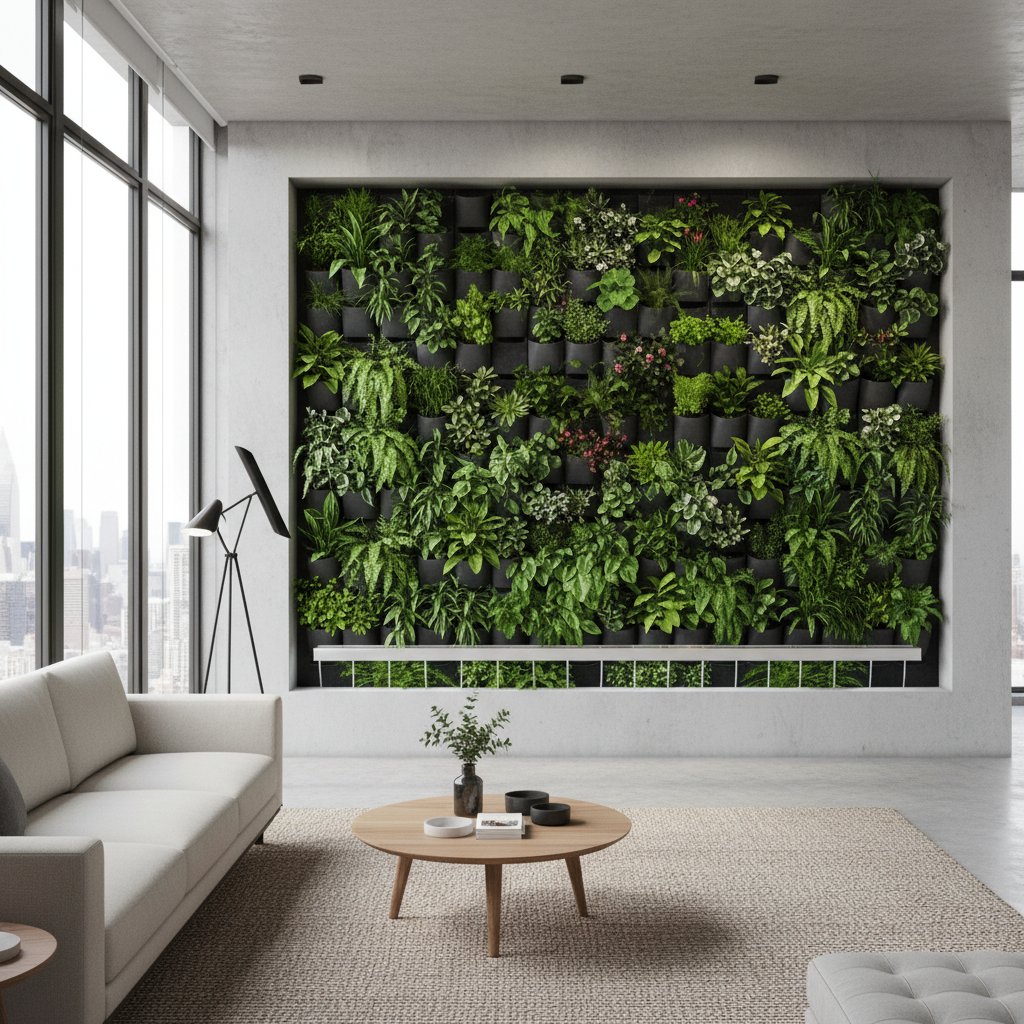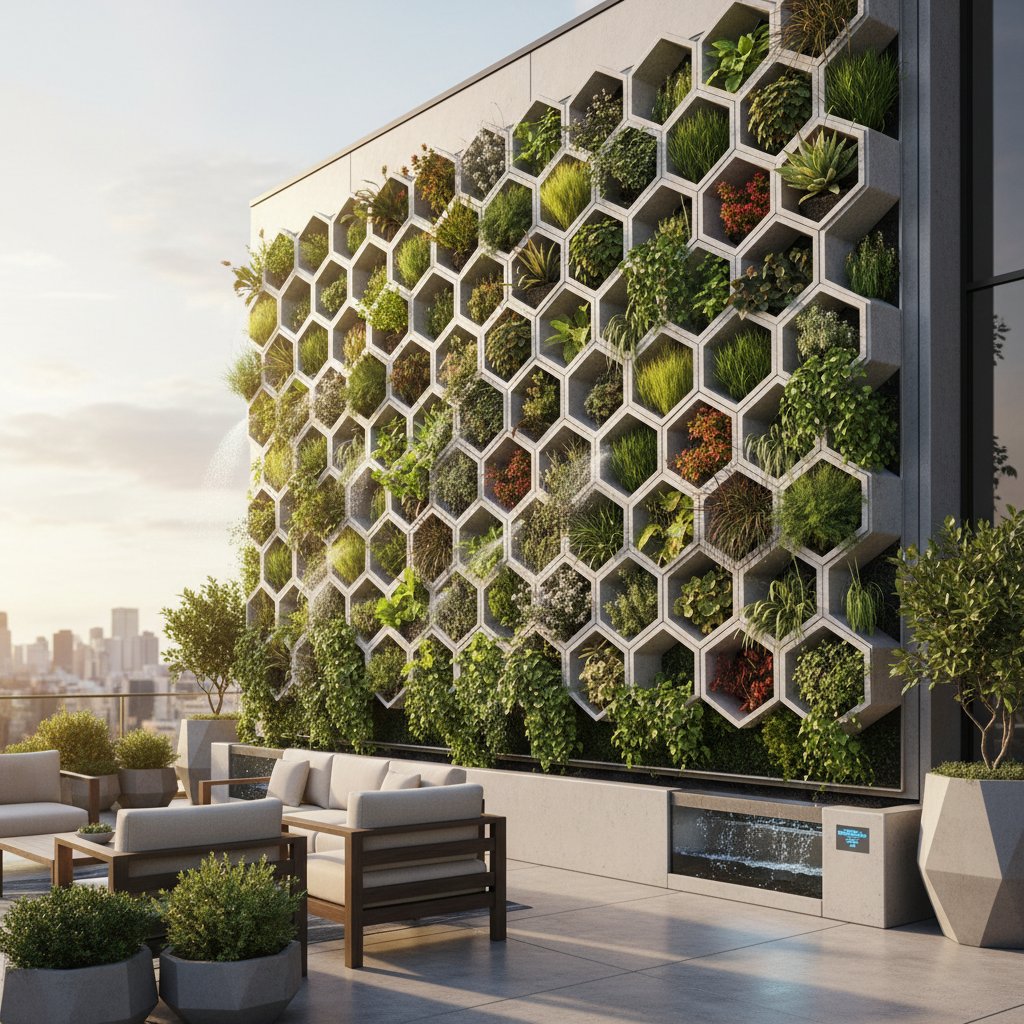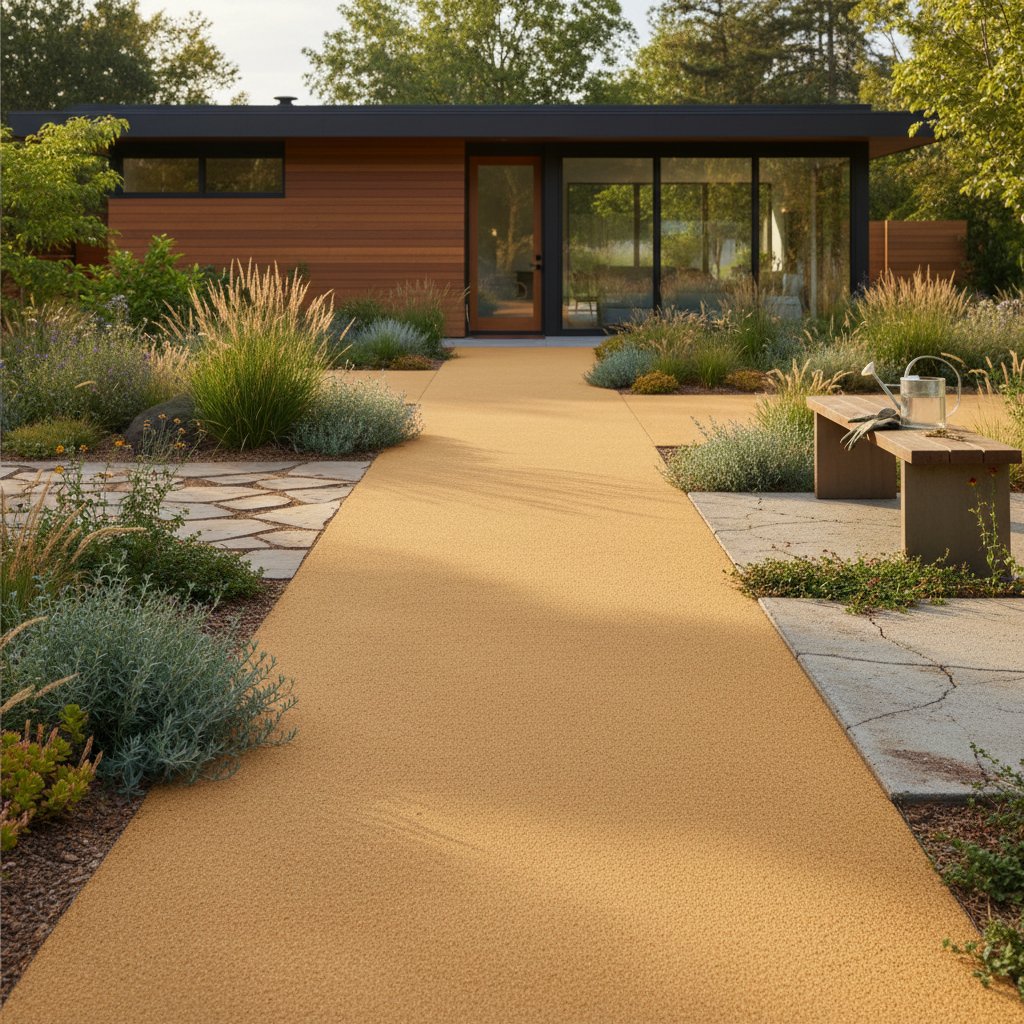Self-Watering Living Walls Transform Hardscapes
Design innovations occasionally redefine spatial experiences. Homeowners often encounter this shift upon viewing a living wall for the first time. Greenery ascends a solid surface, tempering stone or concrete in a manner that surprises yet harmonizes with the environment. Such installations prompt reflection on the potential of vertical surfaces.
In numerous garden projects, plants interact with durable materials in inventive manners. Self-watering living walls stand out for their equilibrium. They unite the utility of hardscape elements with the vitality of vegetation. This integration fosters spaces that pulse with life, altering perceptions of constructed areas.
The Concept Behind Living Walls
A living wall functions as a vertical garden. Plants develop within a framework affixed to a wall or an independent structure. These setups employ soil-filled containers or pockets, distinct from self-adhering vines. An underlying mechanism supplies water and nutrients to sustain growth.
Conventional living walls demand regular hydration via drip lines or hand watering. Self-watering variants advance this principle. Reservoirs or automated irrigation respond to soil moisture, maintaining plant hydration with minimal intervention. This approach suits individuals with demanding schedules who seek aesthetic enhancements without intensive care.
Why Hardscapes Benefit from Living Greenery
Hardscapes establish form and durability. They outline walkways, terraces, and barriers. Alone, these features may convey starkness or chill. Vegetation introduction mitigates such rigidity, infusing texture, aroma, and dynamism.
Self-watering living walls excel in this integration. They embed directly into architectural lines rather than adjacent placements. Imagine a masonry enclosure with foliage enveloping one facade. The masonry retains its solidity, yet the verdure alters the ambiance. It modulates light reflection, moderates air temperature, and directs gazes skyward. Even modest applications can convert confinement into allure.
How Self-Watering Systems Work
Irrigation forms the core of self-watering living walls. Components typically encompass a water tank, tubing or conduits, and sensors tracking hydration. The tank positions at the foundation or rear, dispensing fluid via capillary rise or regulated pumps.
This setup avoids excess saturation, prevalent in standard vertical setups. It promotes uniform and profound moisture penetration. Consequently, roots flourish in a steady milieu, minimizing stress and extending plant viability.
Homeowners gain reduced upkeep time alongside reliable development. Water conservation addresses sustainability priorities in landscaping practices.
Choosing Plants for a Living Wall
Vertical gardening plant selection differs from ground-level choices. Factors like gravitational pull, light exposure, and localized conditions influence decisions. Shade-tolerant options such as ferns, ivy, and mosses yield dense verdant strata. Sun-exposed areas suit succulents, culinary herbs, and indigenous bloomers resilient to intensity and warmth.
Designers advocate combining varied textures and habits. Examples include:
- Trailing varieties like creeping Jenny or pothos, which ease contours and impart fluidity.
- Dense fillers such as miniature ferns or sedges, which occupy voids and offer stability.
- Vibrant leaves from coleus or heuchera, providing differentiation and temporal appeal.
Balance assortment with uniformity. Excessive diversity risks disorder. Strategic repetition across the expanse generates cadence and cohesion.
Integrating Living Walls Into Hardscape Design
Planning incorporates aesthetic and functional ties to adjacent elements. Greenery-clad walls serve as highlights or supports for features like benches or fountains. Intentional positioning avoids incidental appearances.
Effective strategies encompass:
- Framing vistas: Site walls to captivate, such as pathway termini or seating opposites.
- Easing junctions: Employ verdure to merge hard edges, like terrace-fence interfaces.
- Forming barriers: Erect plant screens for seclusion, diffusing illumination while enclosing.
- Enriching confined zones: Introduce abundance in patios or verandas without ground consumption.
Self-watering capabilities render these viable in demanding locales. Reliable hydration curtails losses from oversight or variable conditions.
The Aesthetic Shift of Living Hardscapes
Effective living walls reshape views of engineered settings. Functional elements evolve into multisensory encounters. Leaf whispers, herbal fragrances, and foliage light interplay enrich the setting.
Green presence within ordered realms provides psychological ease. It illustrates nature's persistence amid design. Residents report tranquility from such pairings with stone or timber. Contrasts amplify vitality in flora and elegance in substrates.
Sustainable Function Meets Beauty
Self-watering living walls deliver environmental advantages past aesthetics. Vegetation purifies air and tempers climate through daytime heat uptake and evaporative cooling. Efficient watering minimizes usage, potentially incorporating harvested precipitation.
Edible selections like basil, berries, or salad greens add utility. Harvesting from elevations yields satisfaction, harmonizing with hardscape aesthetics.
Starting Small and Growing Over Time
Beginners benefit from initial modest scales. A single module permits seasonal observation. Track solar, aerial, and shadowed impacts on progression, refining selections.
Familiarity eases scaling. Modular constructions facilitate panel additions. This progression maintains unity while mitigating premature complexity.
Caring for a Self-Watering Living Wall
Systems ease maintenance yet require periodic oversight. Monitor tank levels, prune excesses, and clear conduits for optimal function. Infuse nutrients via lines for sustained vigor.
Established walls exhibit autonomy. Plants shade bases and equilibrate hydration organically. They integrate as architectural extensions over time.
Experiencing Dynamic Outdoor Spaces
Living walls embedded in hardscapes alter daily interactions. Diurnal light varies leaf highlights from vespertine dimness. Precipitation intensifies hues in flora and foundations alike. Cycles amplify subtly, from emergent sprouts to wilting petals.
Routine tending fosters landscape bonds. Design proves evolutionary, accommodating growth and diligence. For those merging firmness with fluidity, self-watering living walls provide elegant, feasible routes. They elevate surfaces to animated canvases, streamline care via ingenuity, and deepen site connections. As accents or anchors, they animate hardscapes, engaging senses and prolonging stays.



